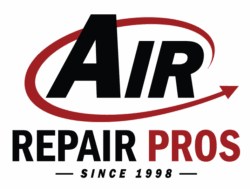As heating and cooling costs continue rising, more homeowners are exploring efficient heat pump systems. But how do they work, exactly?
The key is understanding heat pumps don’t actually “create” heat themselves. Instead, they concentrate naturally existing heat, and transfer it elsewhere. This lets them tap into the heat from outdoors.
But you might be thinking, “What heat from outdoors?” Especially in the dead of winter! It’s science – let’s explain!
The Core Components
Heat pump systems have an indoor unit and outdoor unit, connected by pipes transporting refrigerant. This is the substance that absorbs then releases heat. Inside both units are heat exchangers equipped with fans.
The outdoor unit hosts the all-important compressor, activated by electricity. This is the pump driving the refrigerant in an endless loop. Then there’s the expansion valves, which make sure the right amount of refrigerant is flowing, and converting liquid to gas. Check valves ensure one-way travel.
And, the MOST important for a heat pump: the reversing valve! It toggles which side serves as evaporator or condenser during heating/cooling modes.
How Cooling Mode Works
When cooling your home, the indoor unit becomes the evaporator while the outdoor unit serves as condenser. Refrigerant absorbs heat inside your home then transports it outdoors for release.
Specifically, cool liquid refrigerant enters the indoor heat exchanger. As it absorbs indoor air warmth, it boils into a gas, which carries that thermal energy along while still cold relative to outside temperatures.
The gas flows into the outdoor heat exchanger where fans rapidly remove the heat it brought from inside. This condenses the refrigerant back into a liquid, so, the process repeats in an endless loop.
Heating Mode Functionality
To warm your home, the heat pump simply reverses the indoor and outdoor unit roles via the reversing valve. This time, the refrigerant extracts freely available environmental heat before releasing it indoors.
Despite cold conditions, refrigerant boiling points are so low that outdoor air still gives it thermal (heat) energy. The gas then flows inside where it compresses. As it condenses back into warm liquid, the heat gets blown indoors, before the loop repeats.
Efficiency Factors
But it’s true, heat pump efficiency varies based on outdoor temperatures. Warmer air obviously contains more warmth. Once exterior temperatures sink too low, the heating process requires excessive electricity, which make your utility bills go up, despite it technically still being functional.
That’s why, heat pumps work best in temperate southern climates like right here in Frisco. Also, installing the right sized unit helps ensure the right capacity for the climate. An oversized system proves wasteful while an undersized one can’t keep pace on extreme cold days. Our techs will know exactly what to install for you – and again, heat pumps are best suited for Frisco weather and can save you money in the long run.
Book an appointment online or give us a call at 469-333-2474.

